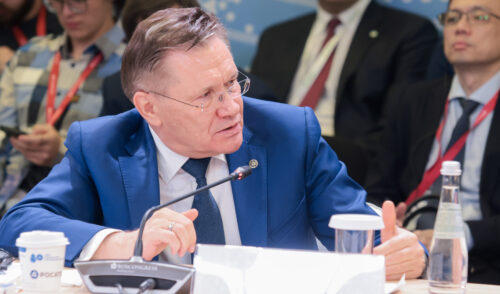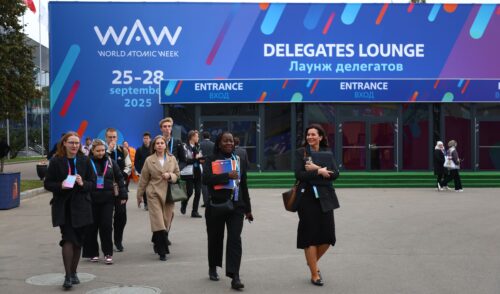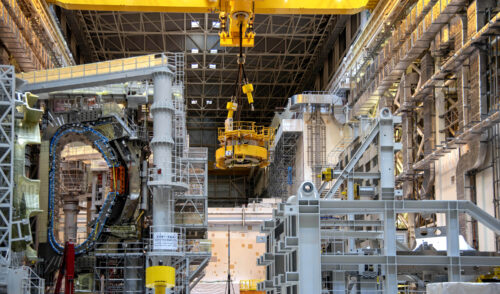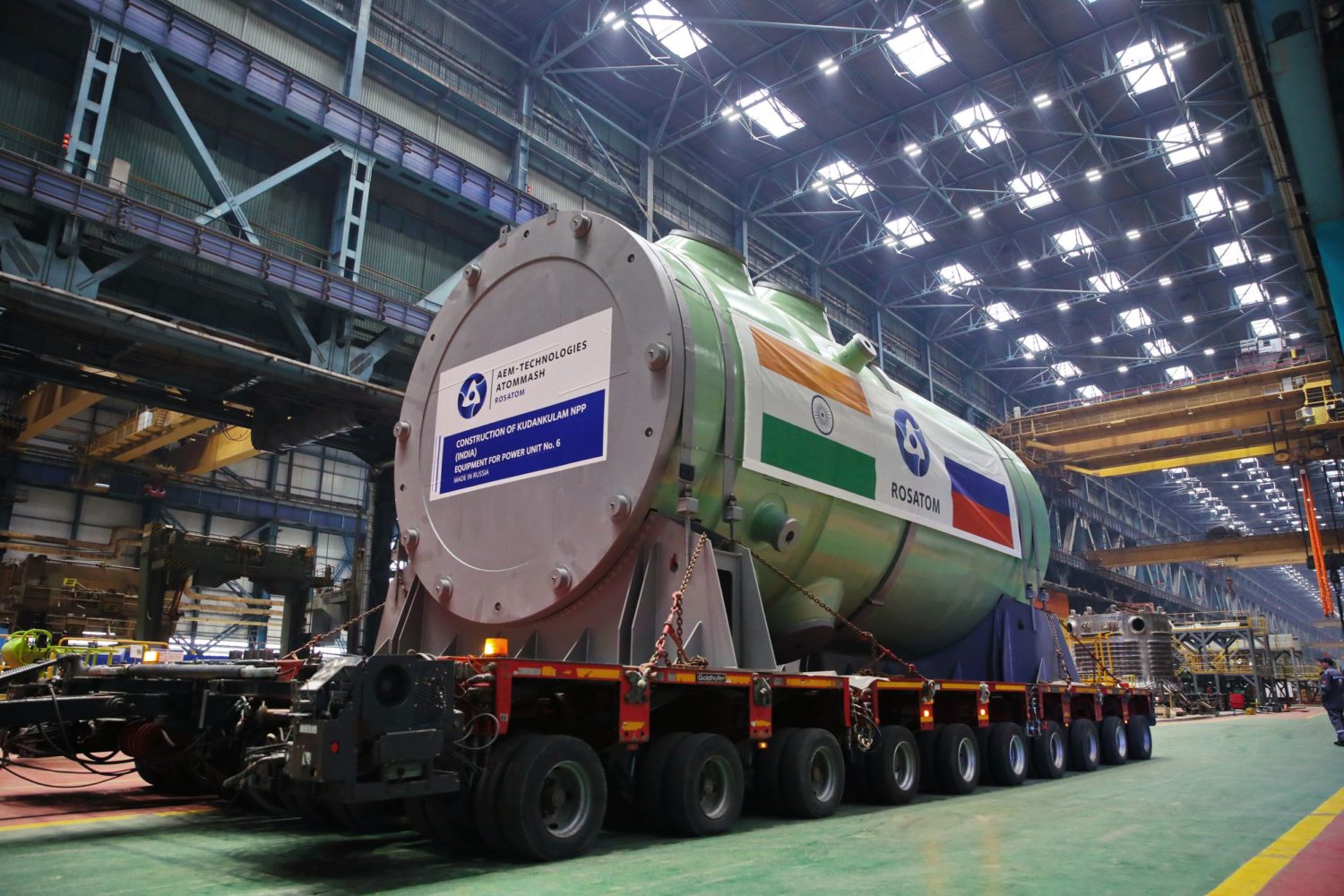
News from Kudankulam
back to contentsIn January, a reactor pressure vessel for Unit 6 arrived at the nuclear construction site near India’s Kudankulam. This is where India is building four Russian-designed power units with input from Rosatom, and another two units have long been in operation. Each of these six units has a VVER-1000 reactor. Here is our update on India’s largest nuclear construction project.
The 320-tonne VVER-1000 reactor pressure vessel (RPV) for the sixth unit of the Kudankulam Nuclear Power Plant was manufactured at Atommash (part of Rosatom’s mechanical engineering division). The RPV was transported from Volgodonsk, where the production site is located, on a special vehicle to the plant’s pier to be loaded onto a river vessel and shipped to the sea port of Novorossiysk. Then it was placed in the hold of a sea-going ship and traveled a distance of 11,000 kilometers to the construction site.
The Kudankulam NPP project is divided into three phases, each with two units. Rosatom’s engineering division and the Nuclear Power Corporation of India Limited (NPCIL) is currently building four power units. Two power units of the first phase are already in operation.
Construction works are nearing completion at Unit 3. Workers are laying pipelines for the safety and auxiliary systems in the reactor building. Control cabinets for the regular and backup I&C systems are being installed. Turbine cylinder housings are being assembled in the turbine building. Preparations are underway for the first pre-commissioning works. The plan for this year is to energize auxiliary power lines, launch a desalination plant, and flood the water intake area. The flooding will be done through a controlled demolition of the temporary dam. All these steps are necessary to prepare the reactor for flushing operations, which are also planned for the current year.
Meanwhile, construction works are continuing at pace in the auxiliary reactor building and the turbine hall, and the outer containment shell is being erected at Unit 4. The reactor equipment is already in its design position, while the transportation airlock is being assembled. Welding on the primary coolant piping is scheduled to begin in the reactor building in the second quarter of this year.
Besides, Rosatom’s fuel division is working to deliver on the contract for the supply of nuclear fuel for Units 3 and 4 with VVER-1000 reactors, which will have 18-month refueling intervals starting from the first fuel loading. The power units of the project’s first phase used to have a 12-month refueling interval but, with the introduction of an advanced fuel design in 2022, were converted to an 18-month interval.
Construction of a reactor building, an auxiliary reactor building and a turbine hall is underway at Unit 5. It is planned for the current year to finish concreting the inner containment structures up to the bottom floor level of the reactor building’s central hall, and install the reactor pressure vessel in the design position.
Reactor and turbine buildings and an auxiliary reactor building are also under construction at Unit 6. The plan for 2025 is to install the reactor pit equipment, including the molten core catcher, cantilever truss, and dry shield. A set of four steam generators for Unit 6 will also be shipped in the same year.
Reliable energy for South India
The first-phase reactor units reached an important milestone in 2024 as their power output exceeded 100 billion kWh in July. The two operating units provide electricity for about 50 million households in the Indian states of Kerala and Tamil Nadu.
As a reminder, Unit 1 was connected to the grid in October 2013, followed by Unit 2 in August 2016.
>100 B kWh
is a cumulative power output at the first two units of the Kudankulam NPP
“The Kudankulam NPP owes its efficient operation to the proven design solutions, reliable equipment, and high-quality construction, installation and commissioning works. Every step, from engineering to commissioning, is made in close, comprehensive cooperation between the Indian project owner and the Russian contractor. Each party puts in its unique competencies to build a technologically sophisticated and efficient facility that meets the highest requirements for both quality and safety,” says Alexey Zhukov, First Vice President for Construction at AtomStroyExport.
The Kudankulam NPP is India’s largest power plant in terms of both individual unit capacity and total installed capacity. Russian engineers developed a series of technological solutions specially for this plant, including a system of hydraulic structures for environmental protection and uninterrupted supply of cooling water from the sea.
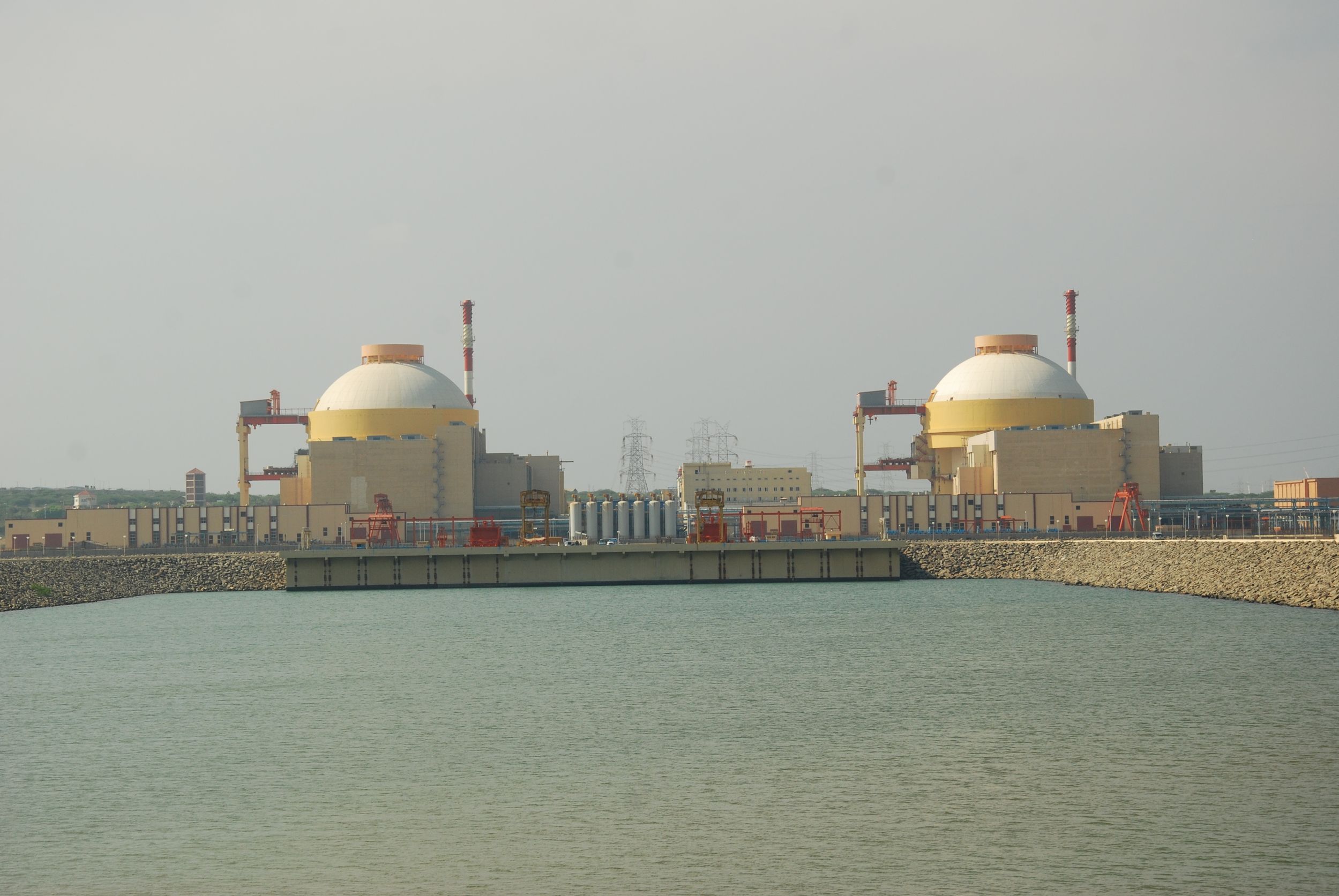
The cooperation between Rosatom and India continues. For example, Rosatom Director General Alexey Likhachev met Indian Prime Minister Narendra Modi during his visit to Russia in 2024 and suggested joining forces for the development and local production of small modular reactors.
Photo by: Rosatom Mechanical Engineering Division, Rosatom Engineering Division


